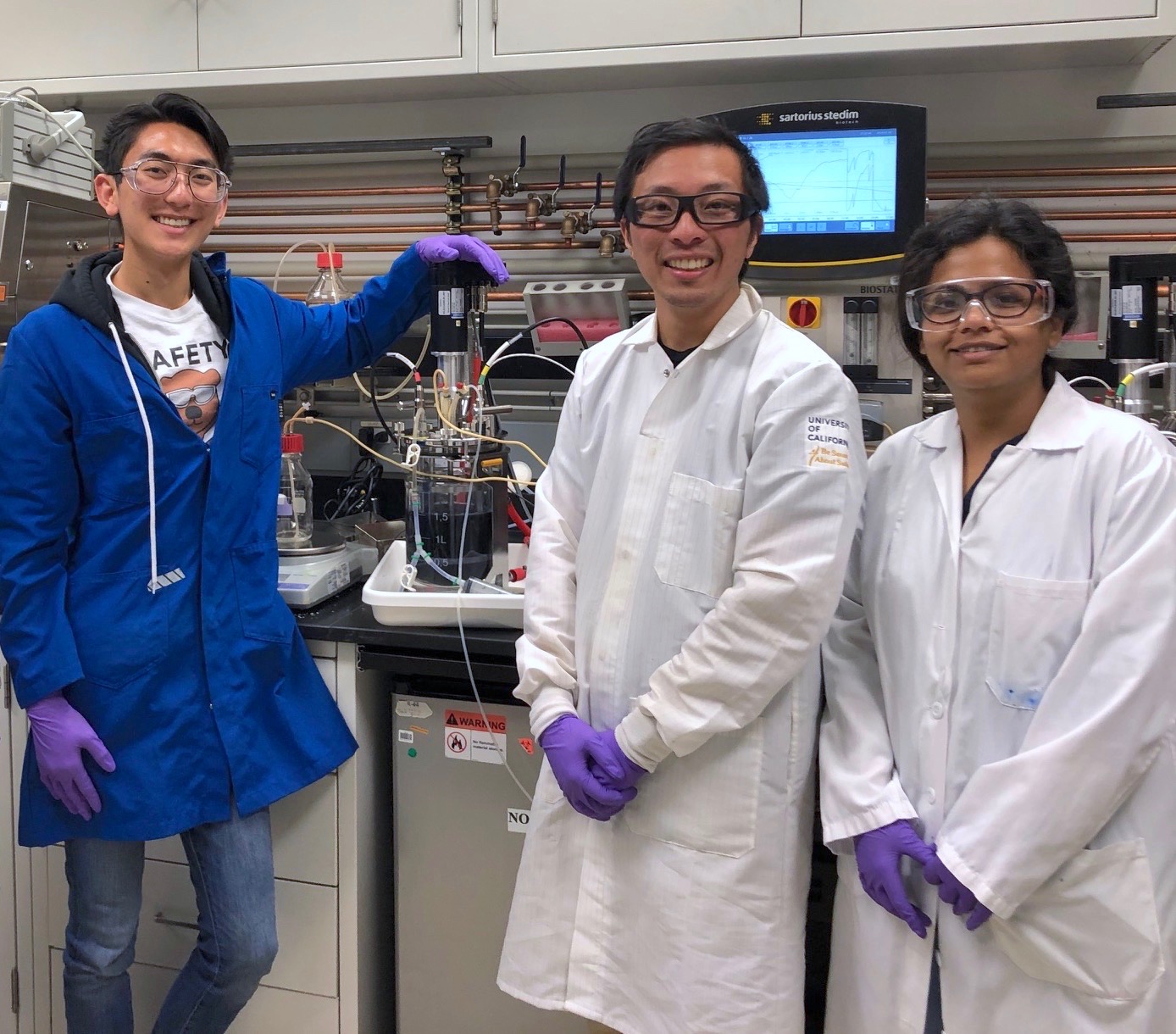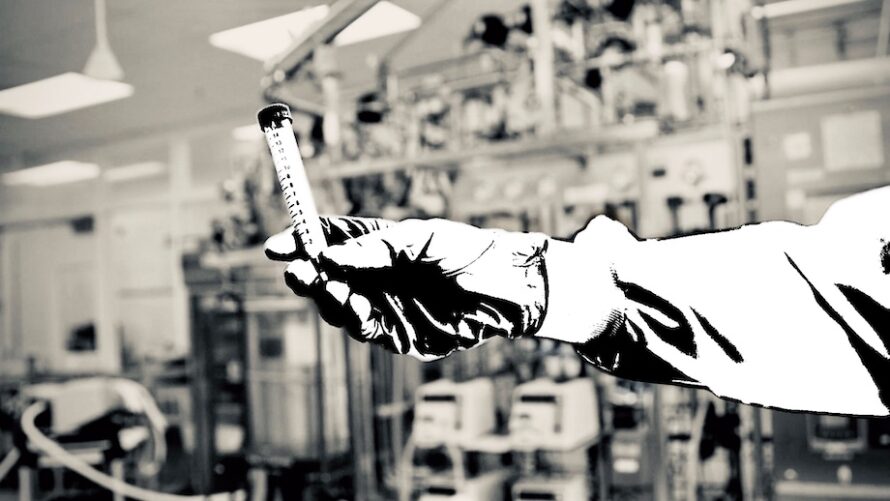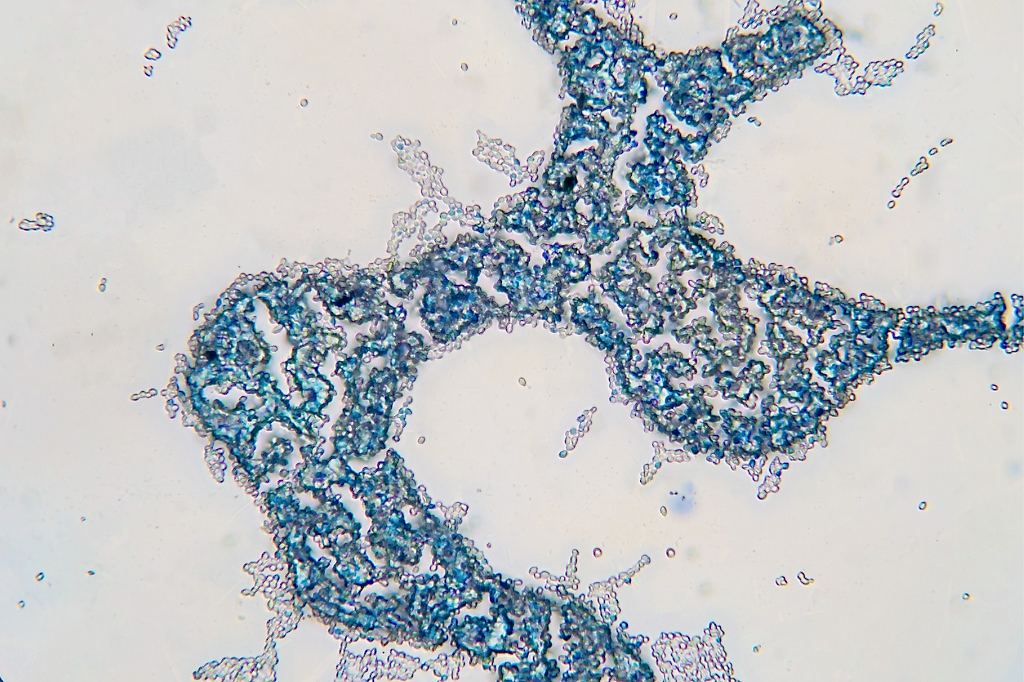Key Takeaways
- Our scientists have a workflow for developing new microbial strains that makes it quicker, easier, and less expensive than existing methods.
- They have now used the workflow to design a bacterium that can make target molecules by converting a type of plant tissue that often goes to waste in agriculture and forest management.
- The approach will help make the biomanufacturing industry more sustainable .
Using engineered microbes as microscopic factories has given the world steady sources of life-saving drugs, revolutionized the food industry, and allowed us to make sustainable versions of valuable chemicals previously made from petroleum.
But behind each biomanufactured product on the market today is the investment of years of work and many millions of dollars in research and development funding. Berkeley Lab scientists want to help the burgeoning industry reach new heights by accelerating and streamlining the process of engineering microbes to produce important compounds with commercial-ready efficiency.
A team led by senior scientist Aindrila Mukhopadhyay has developed a workflow that combines CRISPR gene editing with a suite of computational models of microbial gene expression and enzyme activity that can be used to predict the necessary gene edits. Their latest work was recently published in Cell Reports.
“Much of strain design is still trial-and-error based, which is laborious and time consuming. We’ve demonstrated that pairing targeted approaches that focus on specific genes and proteins with methods that model the entire genome, you can tremendously reduce product development cycles from years to months,” said co-first author Thomas Eng, who is the Deputy Director of Host Engineering at the Joint BioEnergy Institute (JBEI), a Department of Energy Bioenergy Research Center led by Berkeley Lab’s Biosciences Area.
The workflow, called Product Substrate Pairing (PSP), has already shown great promise for engineering strains that can convert common bacterial food sources into target molecules. But to demonstrate the true power of the approach, their new work concentrated on developing a strain that could feed on molecules derived from lignin – a type of tough, fibrous plant tissue. Lignin is an ideal eco-friendly precursor to feed biomanufacturing microbes because it is abundant in the hundreds of millions of tons of plant waste that is generated each year from post-harvest crops and landscape clearing. Currently, most biomanufacturing processes rely on simple sugar molecules derived from specially grown crops called feedstocks, but by upcycling the copious lignin already available, JBEI scientists hope to make bio-based manufacturing more renewable and carbon-neutral.
The team started out with a strain of bacteria that can naturally feed on a derivative of lignin, then used PSP to investigate which native genes needed to be deleted, what non-native genes needed to be inserted, and what culturing conditions were needed for the bacteria to produce high levels of a non-native compound. Thousands of computational designs were evaluated and eventually two were tested in the lab. In this case, they edited the bacteria to produce indigoidine, a blue dye with many uses of its own that also serves as a good stand-in for other desirable molecules. Through iterative rounds of computer modeling and real-world culturing and analysis of CRISPR-modified strains, the authors demonstrated a generalizable workflow that removes the crutch of strain design by trial and error.
“The special sauce comes from how well-established tools are integrated together to make a workflow that is applicable to any microbe and any bioprocess,” said co-first author Deepanwita Banerjee, who is a computational research scientist in JBEI’s Host Engineering Group. “Our paradigm-shifting paper demonstrates a logical and efficient way of building and testing strains that is grounded in how the cells are behaving at every step of the development cycle. This is a big step toward a predictive understanding of cellular function.”
The team also drew upon Berkeley Lab’s expertise and instrumentation to fully characterize their microbial factories by many different rubrics. Christopher J. Petzold and JBEI’s Functional Genomics Group leveraged high throughput methods to rapidly characterize how the strains modified their protein expression for this new purpose. Carolyn Larabell, a senior faculty scientist in the Biosciences Area, and her team carried out soft X-ray tomography at the Advanced Light Source to provide ultra-high-resolution imagery that helps identify which cells are best suited to biomanufacturing. Finally, Blake Simmons and scientists in the JBEI Deconstruction Division provided guidance and lignin-rich sorghum samples to demonstrate how this biomanufacturing process would perform under real world conditions.
After about a year of work, the team was able to design a strain with an extremely high 77% yield.
“The whole enterprise of sustainable biomanufacturing hinges on our ability to use a wide range of starting materials,” said Mukhopadhyay, who is the Vice President for Biofuels and Bioproducts, and Director of Host Engineering at JBEI. “However, individual methods can be limited by our incomplete knowledge of less understood precursors. Our ensemble workflow uses well-developed tools and should be applicable to many carbon sources, microbial systems, and biomanufacturing targets.”
# # #
Founded in 1931 on the belief that the biggest scientific challenges are best addressed by teams, Lawrence Berkeley National Laboratory and its scientists have been recognized with 16 Nobel Prizes. Today, Berkeley Lab researchers develop sustainable energy and environmental solutions, create useful new materials, advance the frontiers of computing, and probe the mysteries of life, matter, and the universe. Scientists from around the world rely on the Lab’s facilities for their own discovery science. Berkeley Lab is a multiprogram national laboratory, managed by the University of California for the U.S. Department of Energy’s Office of Science.
DOE’s Office of Science is the single largest supporter of basic research in the physical sciences in the United States, and is working to address some of the most pressing challenges of our time. For more information, please visit energy.gov/science.



